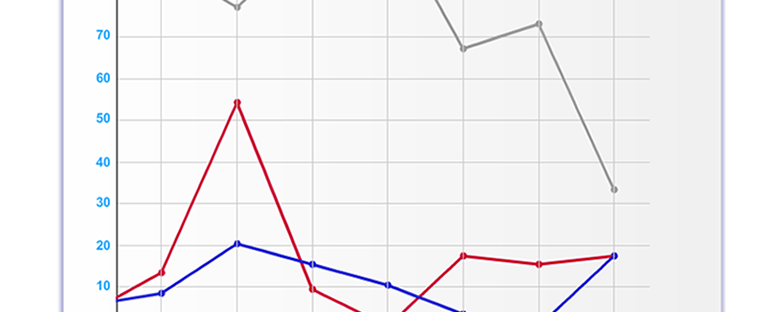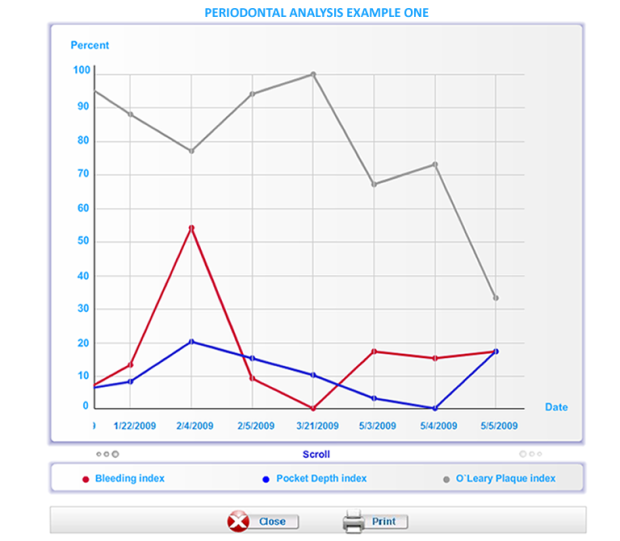Over the past 35 years I have examined thousands of patients after their dental cleaning to check for problems such as decay and periodontitis. Eventually I realized that these standalone exams leave much to be desired. My ability to analyze dental health indicators over time, lacked a mechanism or tool already built into an existing system. This meant I was left providing the same verbal warnings and notices trying to entice patients to do what is needed to care for their teeth.
What I really needed was something to accumulate the data required to help patients understand how to keep their teeth healthy.
Not only would this help keep my dental hygiene practice vibrant, but it would also provide meaningful information to patients so that they can easily see the value of continuing in our program. This has proven to be good for the patient and for the practice.
Our physician colleagues always record vital signs, weight and laboratory studies so that they can monitor change. Certainly a competent physician follows long term tumor marker values. or blood pressure values, or blood sugar levels so they can advise the patient if there is an upward trend that needs addressing. Yet dentists don’t typically follow the hallmark indicators for dental disease in a useful format.
So I thought about what the basic indicators are that can be followed over time. I also looked at what I could add to make the “recall” appointment more than simply the rudimentary plaque removal, calculus and checking for dental disease.
The ability to predict a patient’s prognosis for keeping their teeth and predicting success of tooth restorations was what I needed.
The most important risk indicators are:
- Plaque accumulation
- Bleeding gums
- Gum pocket depth
Indeed there are other events we can monitor such as frequency of tooth restorations, extractions, abscesses and more, but those actually are the sequela to the three hallmark indicators – plaque, bleeding and pocket depth.
For several years now I have been using software to track plaque, bleeding and pocket depth and graphically displays the three over time. I accumulate data in a way that shows some of the most important reasons (but not all) why certain dental services may or may not be necessary.
For instance, if the patient continues to require dental restorations we may look at their clinical graph and find that they continually present with heavy plaque.
Or, if someone struggles with gum problems we may observe that they present repeatedly with bleeding gums and beginning pocket depth increases.
But my favorite is to review the plaque, bleeding and pocket depth with the patient and point out that the values favor dental health. I can tell the patient that the prognosis for keeping their teeth and maintaining good dental health is good and what we are doing together is working.
The ability to help the patient understand more about their own dental health prognosis based on accumulating data is rare in dentistry but is very important. And, patients deserve to know this particularly if they honor a dentist to commit their long term care to them.
As you can imagine, this is one of the reasons why Dental Symphony was created. I simply needed a way to fix some of the dental problems that I was finding in my own practice.
Click here to schedule a LIVE online demo to see if we are fit for your office!
Dental Symphony offers ePatient: the only HIPAA compliant Online Patient Registration System with the exclusive “Pre-Clinical Analysis” tool.
ePatient was created by Dentists for Dentists and is easily adaptable for any type of practice with free customization.


Reblogged this on Murnahan Public Relations, Inc. and commented:
An interesting view into what dentists are thinking as they go poking around our mouths. I always knew they were trying to help, but this type of data would appeal to me.
LikeLike